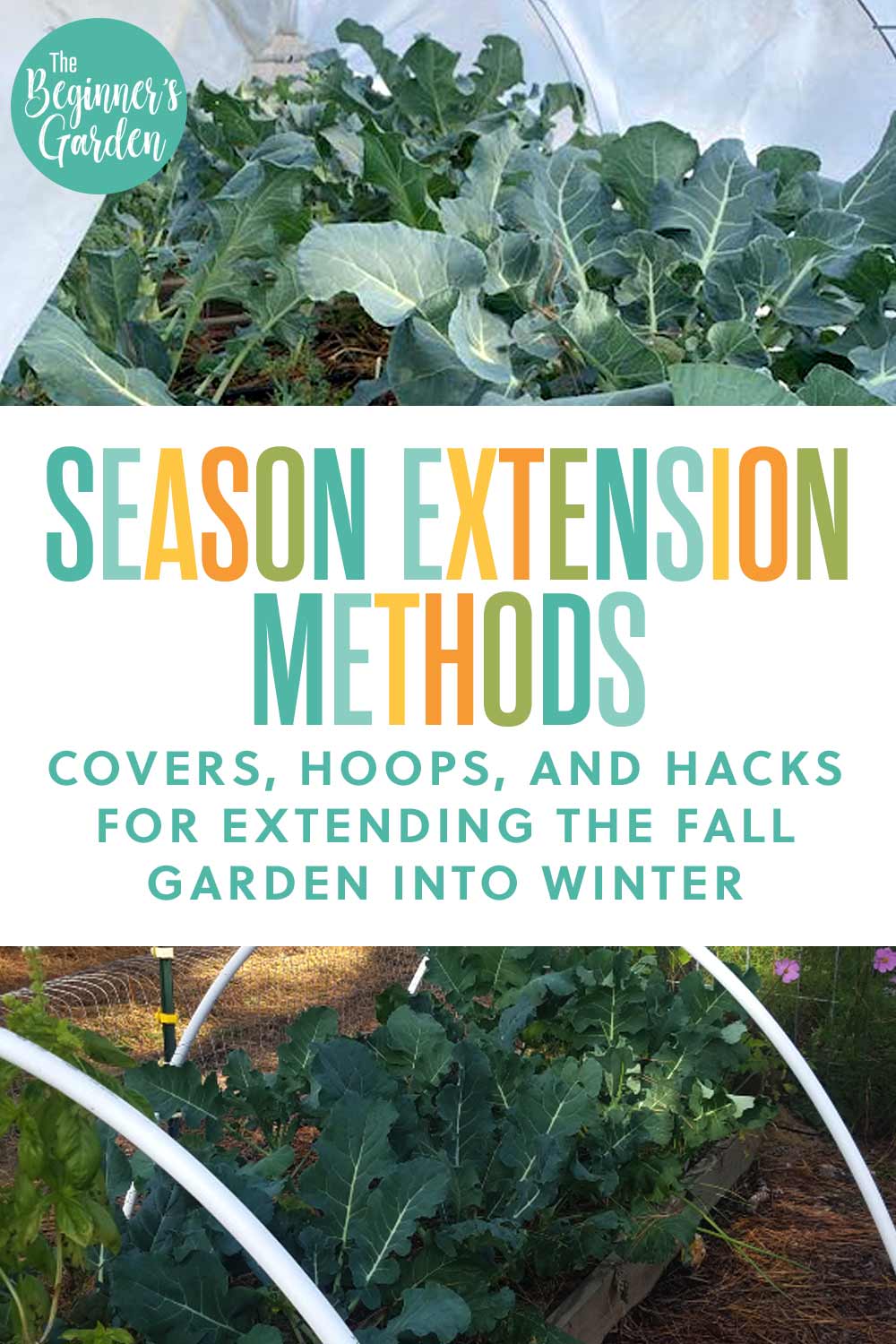Season Extension Methods: Covers, Hoops, & Hacks for Extending the Fall Garden into Winter
Have you ever craved a cold winter’s day the bountiful harvests of summer and fresh produce? While you may not be able to get as much in winter as you can in the summer months, there are ways to still get fresh garden harvests into the colder months.
Using covers and hoops over your crops in the fall will help to extend your season into the late fall and possibly winter. Plus many gardeners have learned hacks to have even more success with the fall and winter garden.
Of course, if you live in a temperate climate with a defined winter, you won’t be able to grow the same type of crops like tomatoes, peppers or cucumbers, but you can grow crops that can tolerate cold — like winter greens, cabbages, carrots, and more.
But how can you harvest those cold weather crops longer into the winter?
Covers
First, you can simply cover them. But not all covers are created equal. Let’s examine different types of covers you’ll find and which ones can be helpful for different applications.
Insect Netting
Insect netting is a great option for the beginning of your fall garden when the pest pressure can still be high. This can prevent bugs eating holes into the leaves of your plants. Most brands of insect netting allow over 90% of the light through without heat buildup. Like other covers, rainfall also percolates through the insect netting easily.
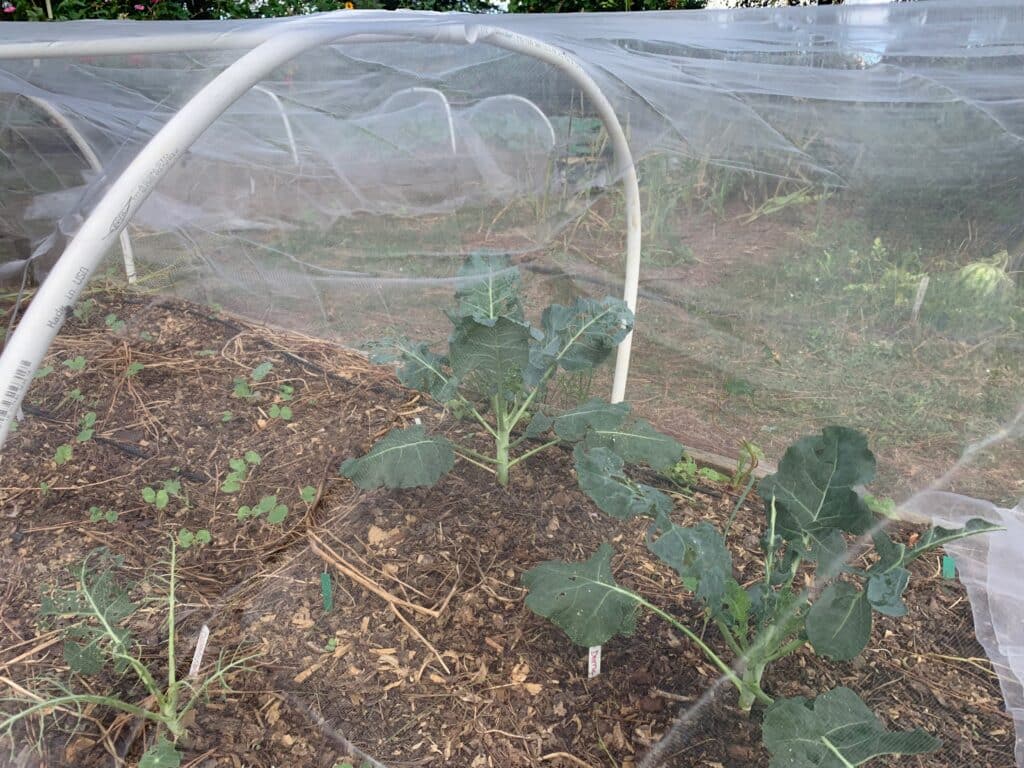
Shade Cloth
Shade cloth is also a great option for the beginning of the season. This allows your fall crops to get settled in and root in to their new home especially if you still have high temperatures. Shade cloth blocks around 65% of the sunlight but still allows enough light through for the crops to grow sufficiently, but in the fall months, it’s best to use it only for a short time. Usually leaving this on top of the crops for the first few weeks, until the heat abates, is plenty.
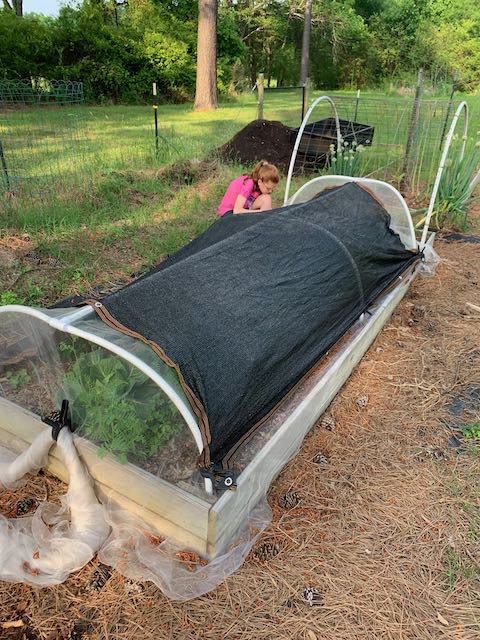
Floating Row Cover
A floating row cover is the best option to protect your crops from cold. Depending on the brand and type, it can allow 75-85% of light through while providing frost protection down to 27-30 degrees F. This can protect crops that can handle frosts but maybe struggle as you get into freezing temperatures.
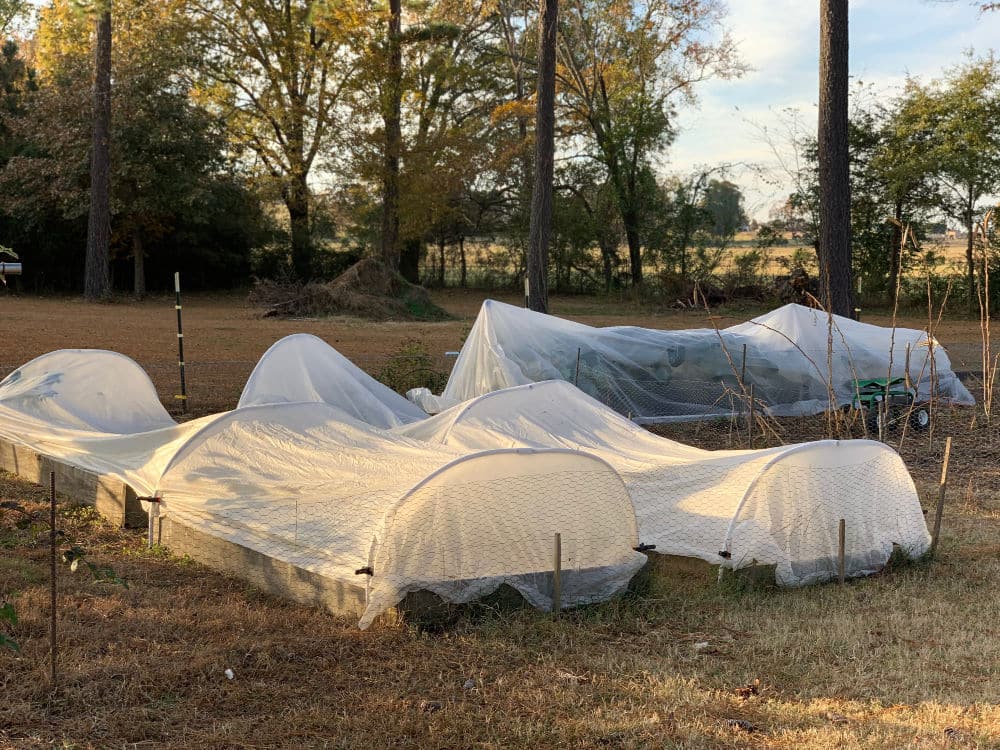
Frost Blanket
A frost blanket (or a heavier density floating row cover) is a step up in frost protection and can be used once the nights start dipping below 28F. This allows 50% of light transmission so it may be a good idea to take this off during those short winter days to allow for extra light. Even if the temperatures are still very cold, you would be surprised how much things can heat up underneath a frost blanket like this on a sunny day.
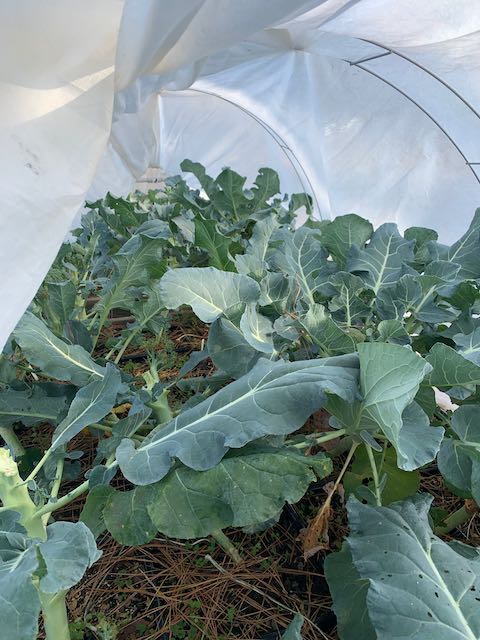
Plastic Tarp
A clear plastic tarp is meant to trap heat in on bitter cold nights, but it should be used wisely. If it is used without a structure to keep it above (and not touching) crops, make sure to use it only over top of a floating row cover. Don’t allow it to touch your crops since that can cause freeze damage to the leaves.
Also, make sure to take this off or vent it during the day since again, the heat trapped can quickly raise temperatures, possibly burning the crops underneath.
Cold Frame
A cold frame is a structure that can be made from plastic or glass and serves like a greenhouse without additional heat. It is usually 12″ tall on north side, 8″ tall on south side but can come in all sorts of sizes. Because it traps the heat from the southern sun, it should be vented when internal temperature reaches 75 degrees or higher.
Greenhouse
Greenhouses are like large cold frames. It is not necessary to heat them in the winter, though you can. Greenhouses are perfect for container gardening in the colder months of the year. You can also cover your containers when temperatures get really cold for extra added protection on really cold nights.
Many greenhouses (like mine) come with automatic ventilation, which takes the stress of remembering to vent for adequate airflow.
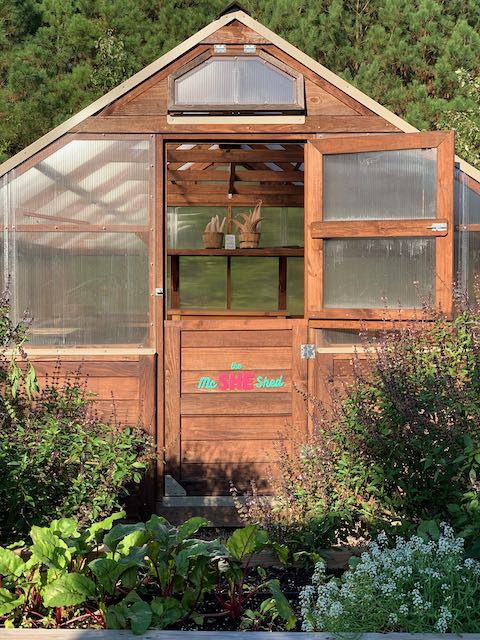
Hoops
We’ve talked about what to cover crops with but how do you achieve that without damaging your crops? Here are several options you can use as hoops to help support the cover over your crops.
PVC
PVC piping is a relatively cheap and easily accessible option. You can space them fairly close together if needed, and they provide adequate structure to hoops. Though some are concerned with the UV damaging them over time, I have not had that issue with mine.
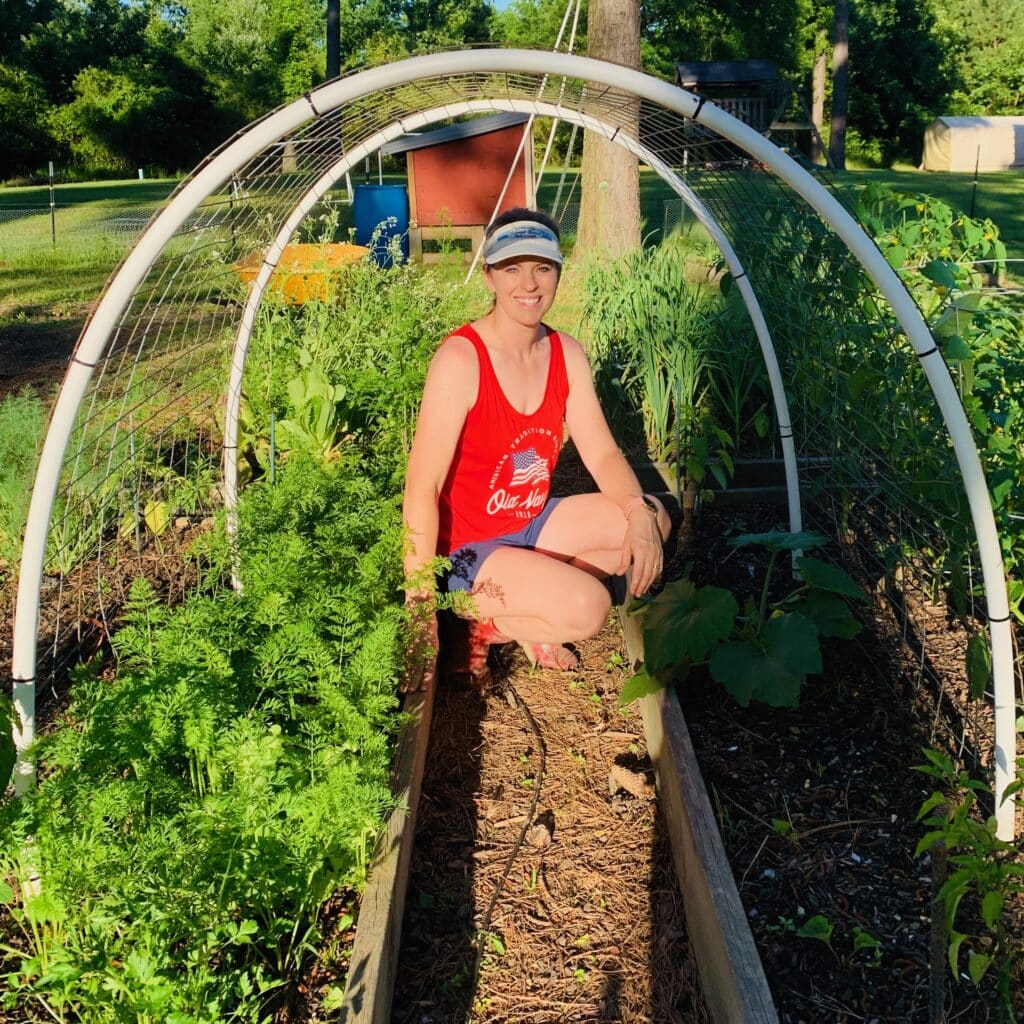
Galvanized Metal Conduit (EMT)
While this is easily accessible because you can find conduit at your local hardware store, it may not be the cheapest option, especially when you compare it to PVC. Also, if you don’t have a tool to bend the metal (in the case of the EMT), this can be an added expense or a extra hoop to jump through.
If you live in a climate where you get a lot of snowfall and need something that is sturdy enough to hold up a cover with snow on top of it, this is a good option. The EMT tube will hold its shape permanently.
Wire Hoops
While wire hoops can come in many options, I invested in ones made for the garden from Gardener’s Supply. I enjoy the ease of putting them in the ground, and they are attractive. They are less sturdy than other options because of how lightweight they are, but they are easy and functional.
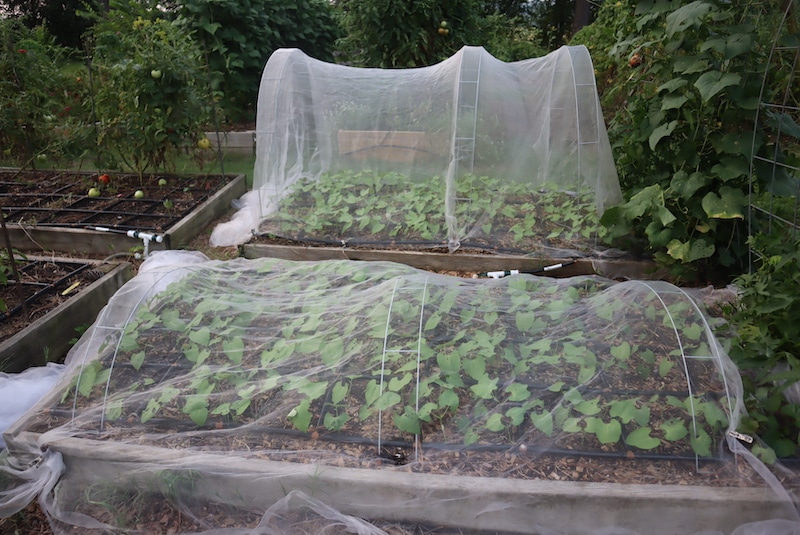
Caterpillar Tunnels
Caterpillar tunnels are a great option for busy gardeners who would rather have the work done for them. You can purchase all-in-one kits that are ready to go in the ground with little work. Often they come with the covers attached. They are especially good if you have small spaces or just a few beds to work with.
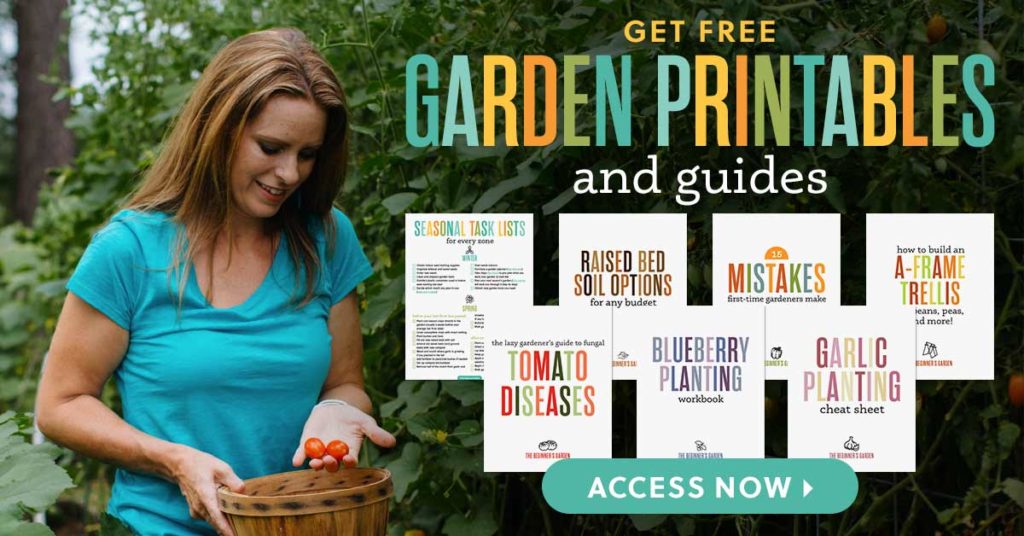
Hacks
Now let’s talk about a few hacks you can use in order to keep crops growing into the cooler months and keep the temperatures up inside of the covers and hoops you’ve placed in the garden.
South Facing Slope
I read about this recently in Eliot Coleman’s book The New Organic Grower (amazon affiliate link) and the purpose is to capture the heat from the southern sun. To achieve this, hill up a row with east-west ridges at 40 degree angle. This can give you a 30% gain in total heat absorption from soil.
Windbreaks
If the winter months bring cold, harsh winds, windbreaks can help to increase the temperature right around your crops and protect them from the scathing cold wind, which dries the leaves out. Having some sort of fence or hedge can increase the air temperature 1-7 degrees depending on the time of year.
Soil & Mulch Cover
Have you ever thought about how wearing darker colored clothing can make you warmer when you’re outside? It’s the same concept with soil. When you have darker colored compost or mulch on the soil, it can raise up the soil temperature. We often think of the ambient temperature being what is the most important, but soil temperature is also a factor in how resilient our crops can be to cold.
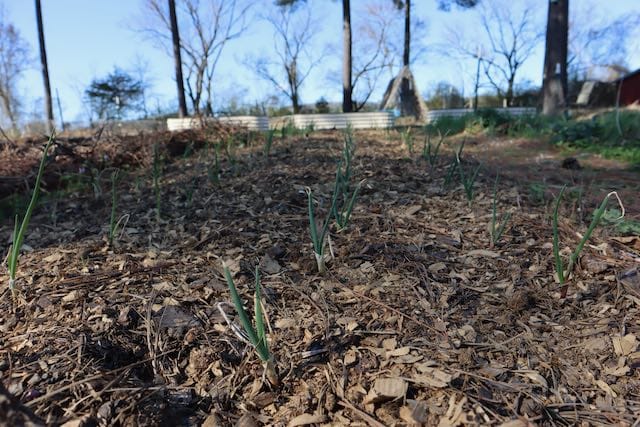
Extra Heat
If you’re expecting a bitter cold night and you plan to cover your crops with a blanket or tarp, you can also add stones, bricks, and water-filled jugs inside the covered areas. This will trap heat during the day and keep it warmer at night.
I hope you try some of these season extension methods this fall and winter. Let me know which ones work best for you or which you are most excited to try out.
Do you get overwhelmed with garden planning?

Subscribe here for my best tips to plan your garden in just 7 days -- all for FREE.
Plus, I'll send you my "In the Garden E-mail" on Fridays, periodic updates on garden resources relevant to you, and you'll receive access to my entire bank of free garden downloads!
You are also agreeing to our privacy policy.

